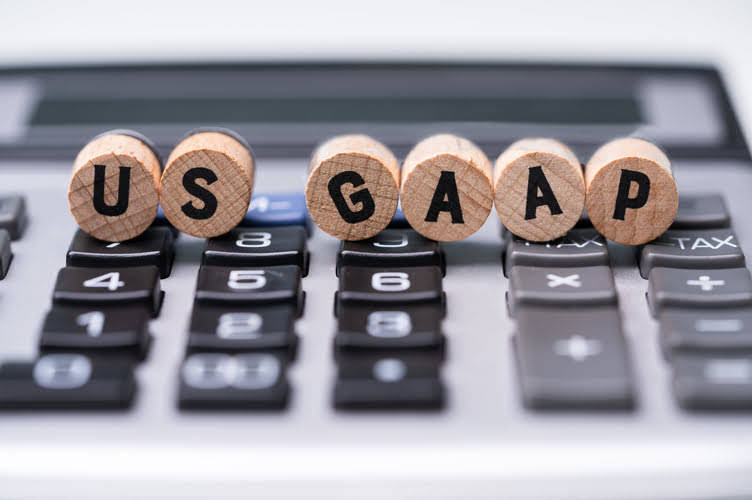Content

These are the necessary expenditures and can be fixed or variable in nature like the office expenses, administration, sales promotion expense, etc. Direct CostDirect cost refers to the cost of operating core business activity—production costs, raw material cost, and wages paid to factory staff. Such costs can be determined by identifying the expenditure on cost objects. Opening StockOpening Stock is the initial quantity of goods held by an organization during the start of any financial year or accounting period. It is equal to the previous accounting period’s closing stock, valued in accordance with appropriate accounting standards based on the nature of the business. Are generally included in labor costs but may be treated as overhead costs. Direct CostsDirect cost refers to the cost of operating core business activity—production costs, raw material cost, and wages paid to factory staff.
- Revolutionise your ecommerce business with the power of 4 platforms in one.
- She has owned Check Yourself, a bookkeeping and payroll service that specializes in small business, for over twenty years.
- Harold Averkamp has worked as a university accounting instructor, accountant, and consultant for more than 25 years.
- The time period may be one year, one quarter, or even one month.
- If you use the FIFO method, the first goods you sell are the ones you purchased or manufactured first.
- Cost of goods sold is an accumulation of the direct costs that go into the goods sold by your company.
In accounting, debit and credit accounts should always balance out. Inventory decreases Cost of Goods Sold because, as the product sells, it will take away from your inventory account.
Why is it important to know and calculate the Cost of Goods Sold?
The IRS has detailed rules for which identification method you can use and when you can make changes to your inventory cost method. The basic formula for the cost of goods sold is to start with the inventory at the beginning of the year and add purchases and other costs. From that number, subtract the inventory at the end of the year. Any property held by a business may decline in value or be damaged by unusual events, such as a fire. The loss of value where the goods are destroyed is accounted for as a loss, and the inventory is fully written off.
- Thus, Jane has spent 20 to improve each machine (10/2 + 12 + (6 x 0.5) ).
- The average price of all the goods in stock, regardless of purchase date, is used to value the goods sold.
- Dollar Value LIFO. Under this variation of LIFO, increases or decreases in the LIFO reserve are determined based on dollar values rather than quantities.
- The value of COGS will change depending on the accounting standards used in the calculation.
- However, it does not track theft, so some businesses will also perform “spot check’ inventory counts or year-end counts to track their shrinkage.
The average cost method, or weighted-average method, does not take into consideration price inflation or deflation. Instead, the average price of stocked items, regardless of purchase date, is used to value sold items. Items are then less likely to be influenced by price surges or extreme costs. The average cost method stabilizes the item’s cost from the year. During inflation, the FIFO method assumes a business’s least expensive products sell first. As prices increase, the business’s net income may increase as well.
Operating Expenses vs. COGS
Ageras is an international financial marketplace for accounting, bookkeeping and tax preparation services. User reviews of professionals are based solely on objective criteria. Calculating cost of goods sold is necessary for any small business.

Hence, the net income using the FIFO method increases over time. At the end of each tax year, you will need to know your COGS. The IRS allows companies to deduct the COGS for any products they either purchase themselves for reselling or that they manufacture. This is available to both online and offline businesses that list COGS on its income statement. Businesses should apply logic that makes sense for their particular situation, but make sure to follow the rules outlined by the U.S. Securities and Exchange Commission when it comes to keeping their books.
How To Calculate Cost of Goods Sold
Instead, they rely on accounting methods such as the First In, First Out and Last In, First Out rules to estimate what value of inventory was actually sold in the period. If the inventory value included in COGS is relatively high, then this will place downward pressure on the https://www.bookstime.com/ company’s gross profit. For this reason, companies sometimes choose accounting methods that will produce a lower COGS figure, in an attempt to boost their reported profitability. That is, the costs of acquiring or manufacturing the products that you sell in any given period.
What is cost of goods sold in balance sheet?
The cost of goods sold is the direct charge, cost, or expense associated with the manufacturing of merchandise and services that are retailed to buyers. COGS do not comprise any overhead expenses such as rent, security charges, communication charges, etc.
The average price of all the goods in stock, regardless of purchase date, is used to value the goods sold. Taking the average product cost over a time period has a smoothing effect that prevents COGS from being highly impacted by extreme costs of one or more acquisitions or purchases. COGS excludes indirect costs such as overhead and sales & marketing. You might see some conflicting information out there about the indirect costs you can include in your COGS. It is always best to consult your accountant or speak to an HMRC adviser to get an accurate answer for your business. This is the total cost of all the items in your inventory at the end of the year. It’s a good idea to take a physical inventory count at least once a year, if not more.
Where can you find the cost of goods sold on an income statement?
She also regularly writes about travel, food, and books for various lifestyle publications. In the above entry, inventory is adjusted downward by $1,250 for shrinkage, and the COGS is increased for the shrinkage. Danielle is a writer for the Finance division of Fit Small Business. She has owned a bookkeeping and payroll service that specializes in small business, for over twenty years. Tim is a Certified QuickBooks Time Pro, QuickBooks ProAdvisor, and CPA with 25 years of experience.
- What is the total cost of all your inventory of products at the start of your fiscal year?
- Cost of goods sold is listed on the income statement as a line between revenue and gross profit.
- If your business sells products, you need to know how to calculate the cost of goods sold.
- Last in, first out is a method used to account for inventory that records the most recently produced items as sold first.
- Some common cost flow assumptions include FIFO, LIFO, and average.
- She also regularly writes about travel, food, and books for various lifestyle publications.
- The basic purpose of finding COGS is to calculate the “true cost” of merchandise sold in the period.
Cost of goods sold is an accumulation of the direct costs that go into the goods sold by your company. This includes the cost of any materials used in production as well as the cost of labor needed to produce the goods. It doesn’t include indirect expenses such as distribution costs and marketing costs.
Year-End Taxes
Instead, these are considered operating expenses, and they are accounted for separately. The average cost method is the most commonly used by ecommerce retailers because it’s the simplest to implement and gives accurate enough results for costs reporting. When you use the Average Cost Method of COGS, you divide your total cost of goods by the number of inventory items you have for sale. By assuming that your costs are weighted equally, you end up with a weighted-average unit cost that you can apply to all units in your inventory. Now, this is more of an accounting thing but none the less it is important. Your balance sheet needs to list all your expenditures and incomes. So knowing the amount you have spent in getting the products to be sold you can arrive at actual expenses by including other costs incurred in the overhead i.e. sales and marketing.

This is the total amount spent for the products you placed in your inventory for selling purposes. If the price your company has set for a product is lower than your COGS, then every time your product is sold, your company loses money. The income statement is broken into several sections, allowing business owners to analyze each area of spending within the business. Cost of goods sold is one of those areas of spending that it’s important for business owners to monitor. You can use COGS to calculate different ratios, which means that you can conveniently determine your business’s health.
By documenting expenses during the production process, a business will be able to file for deductions that can reduce its tax burden. The cost of goods sold is used by analysts and investors to help determine how efficiently a company is managing its production costs. To use the inventory cost method, you will need to find the value of your inventory. The IRS allows several different methods , depending on the type of inventory.
In other words, divide the total cost of goods purchased in a year by the total number of items purchased in the same year. Calculate COGS by adding the cost of inventory at the beginning of the year to purchases made throughout the year. Then, subtract the cost of inventory remaining at the end of the year.
Thus, costs are incurred for multiple items rather than a particular item sold. Determining how much of each of these components to allocate to particular goods requires either tracking the particular costs or making some allocations of costs. Parts and raw materials are often tracked to particular sets (e.g., batches or production runs) of goods, then allocated to each item. Determining costs requires keeping records of goods or materials purchased and any discounts on such purchase. In addition, if the goods are modified, the business must determine the costs incurred in modifying the goods. Such modification costs include labor, supplies or additional material, supervision, quality control, and use of equipment.
When you have a clear picture of the total cost of your inventory, next you look at how much you actually sold. We provide third-party links as a convenience and for informational purposes only. Intuit does not endorse or approve these products and services, or the opinions of these corporations or organizations or individuals. Intuit accepts no responsibility for the accuracy, legality, or content on these sites. Its primary service doesn’t require the sale of goods, but the business might still sell merchandise, such as snacks, toiletries, or souvenirs. The simplified dollar-value methoduses a similar pooling system but uses government price indexes to determine the annual change in price.

Recent Comments